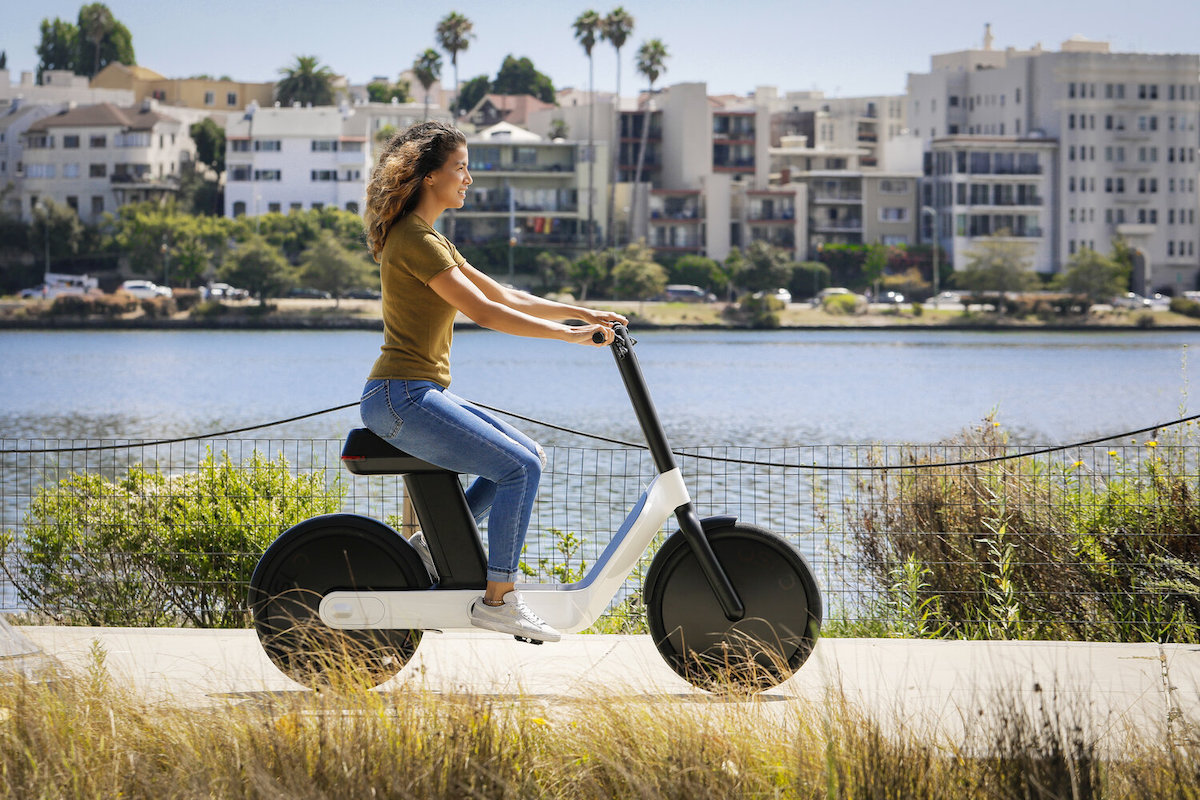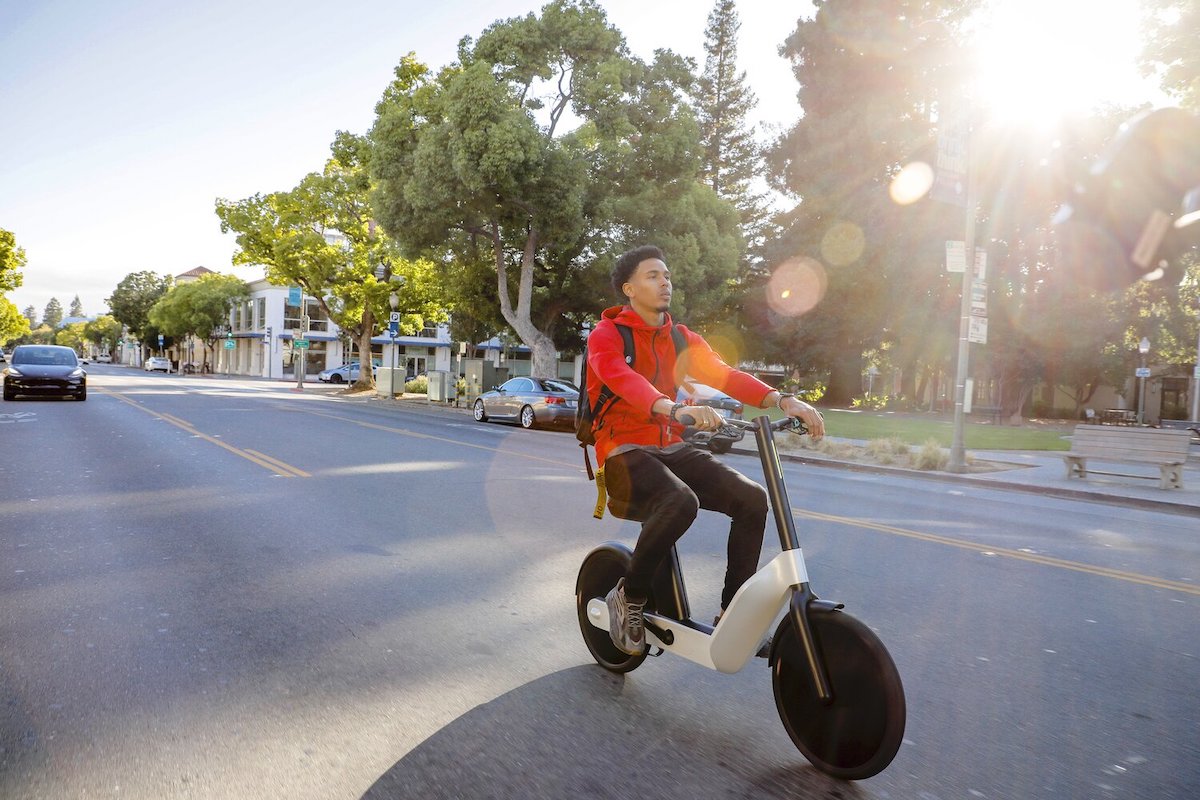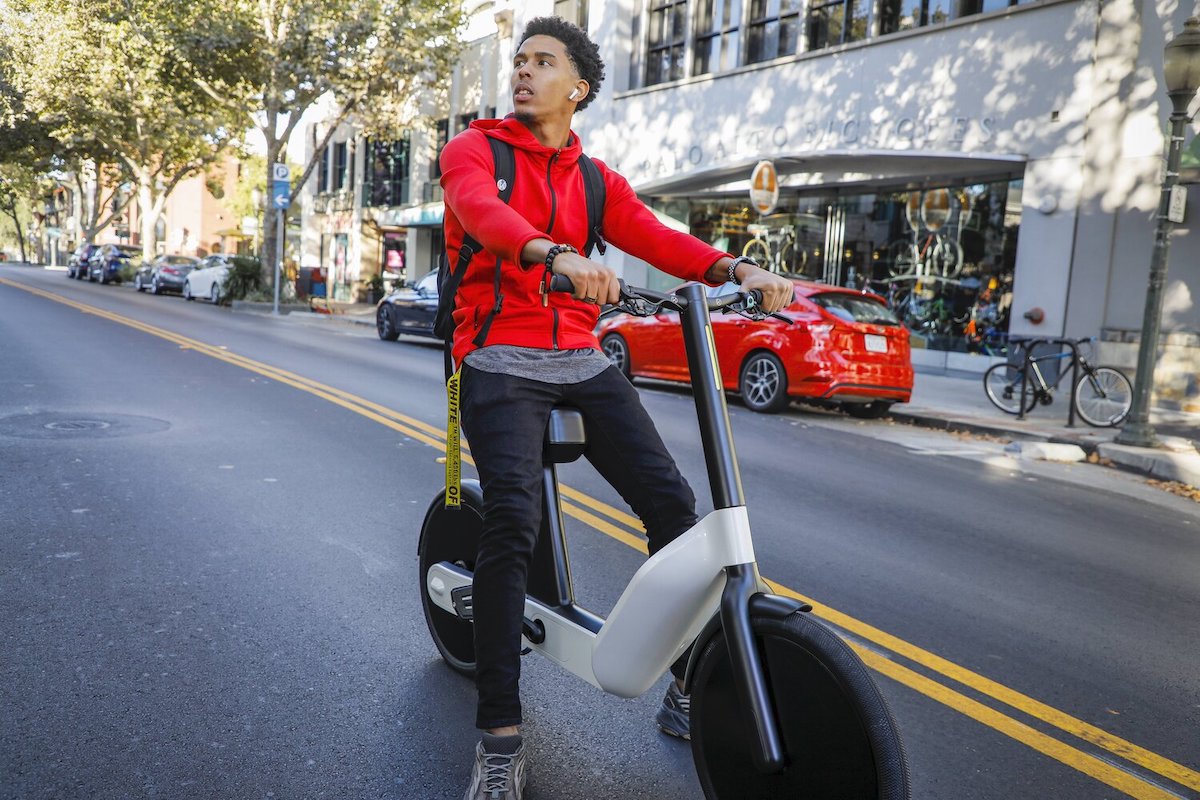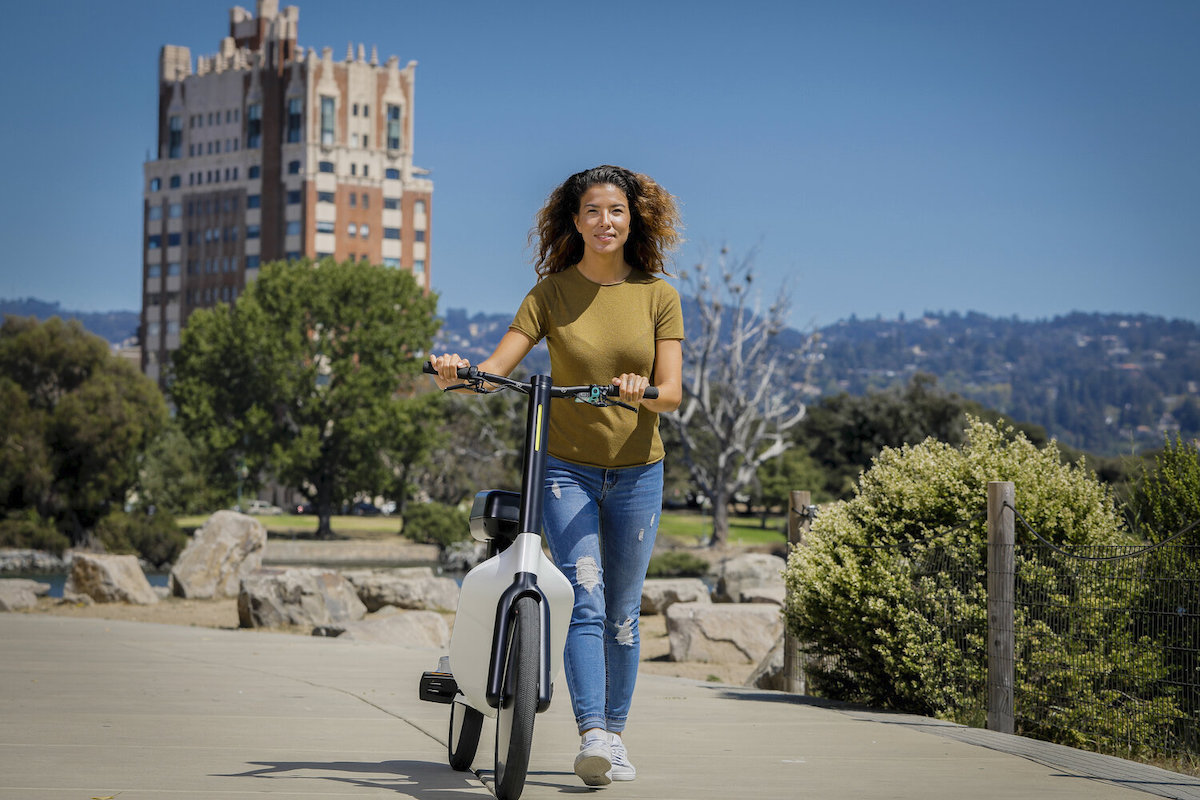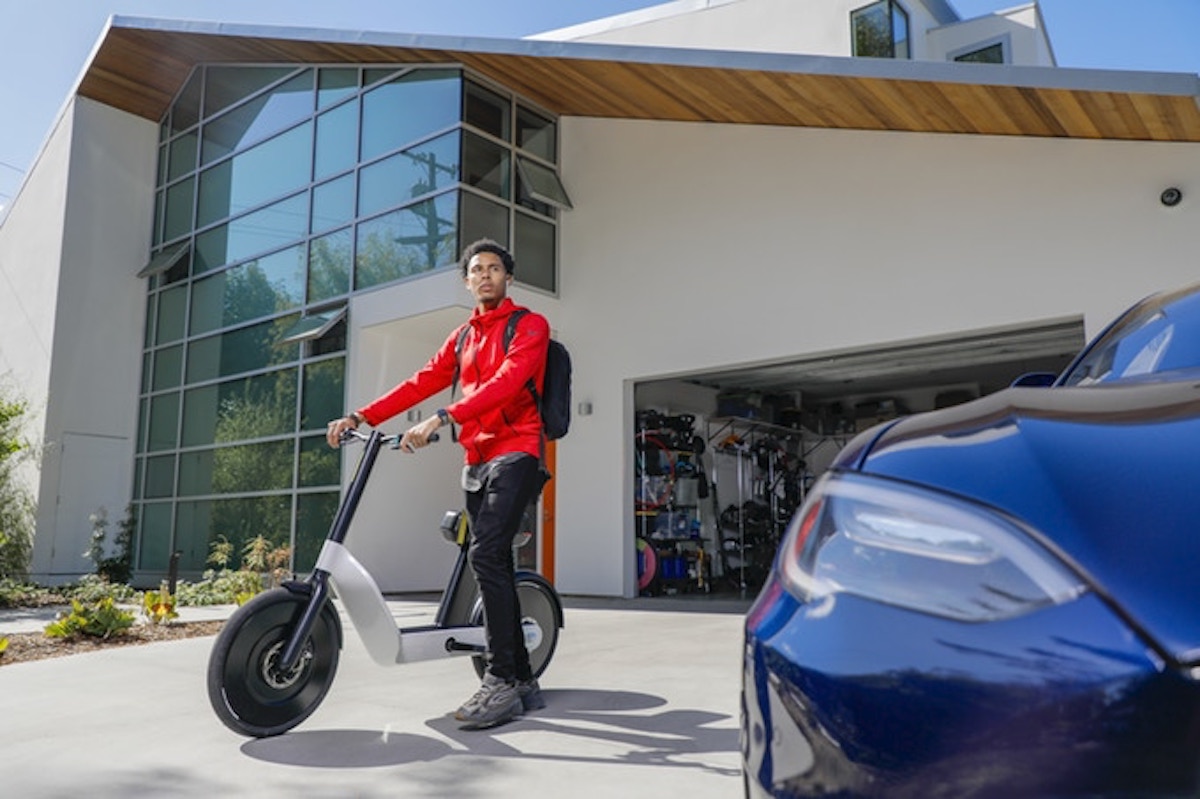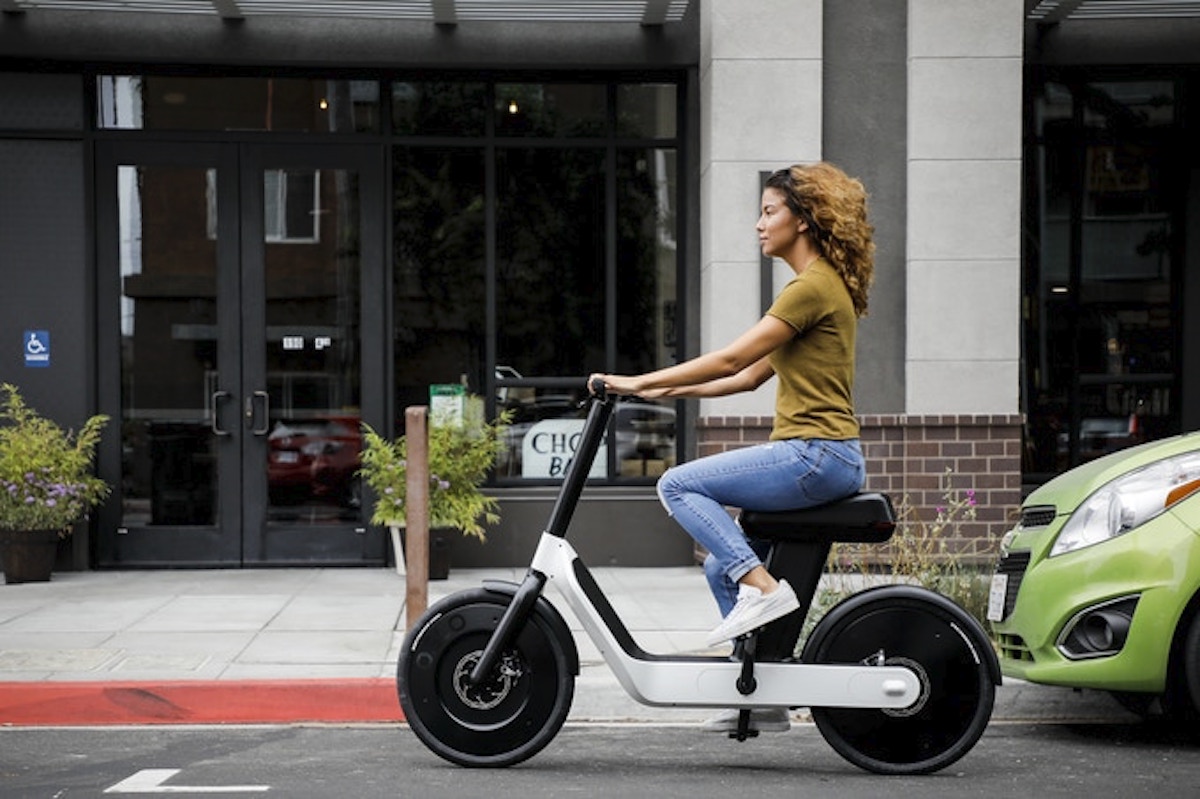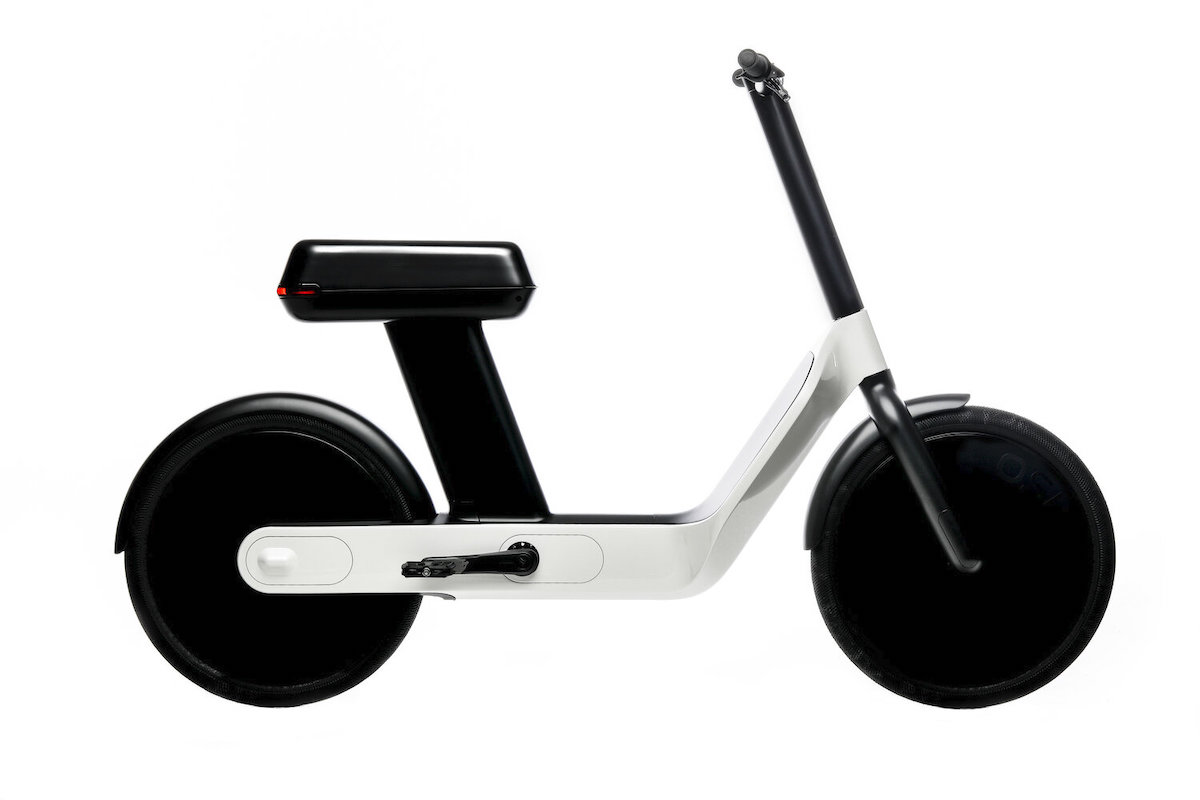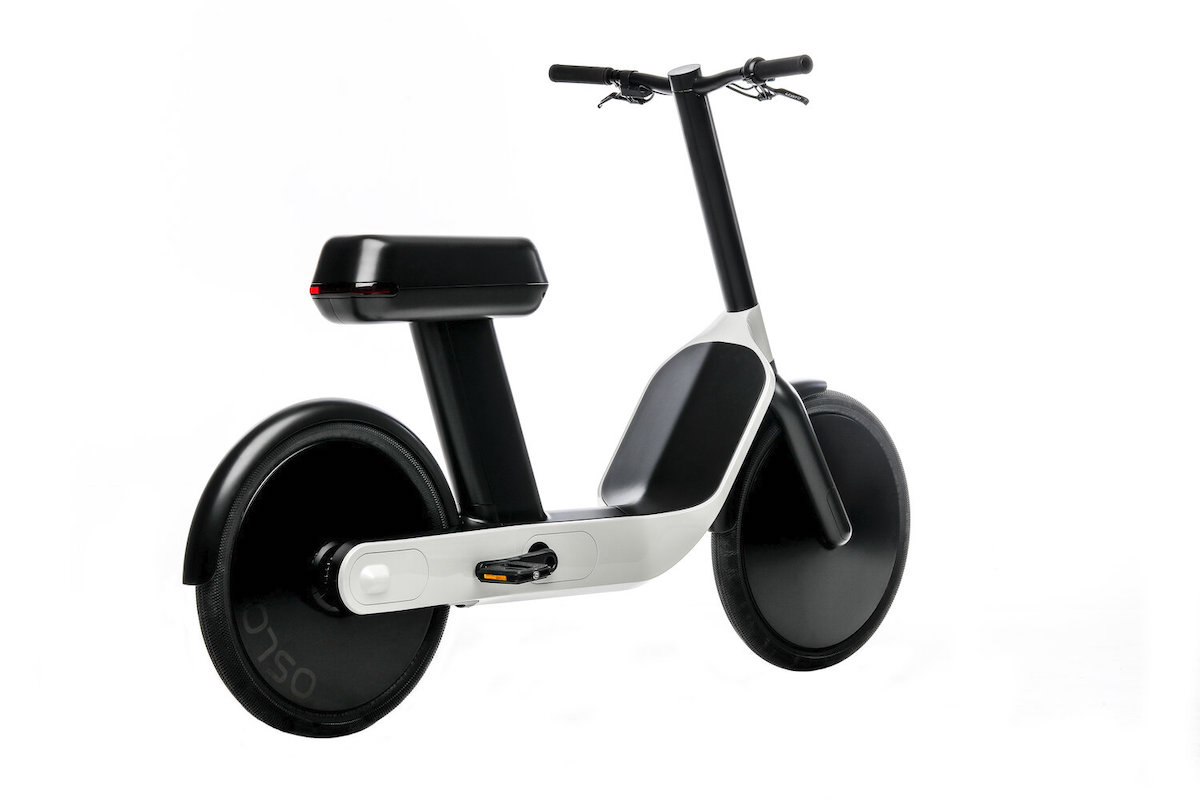If you’ve ever wondered what an ebike might look like if it were designed by Jony Ive or the team that he left behind at Apple, you may want to have a look at the Kickstarter page for a new product called the Karmic Oslo. This hybrid bike/scooter combo features a unique look that mimics a familiar aesthetic that we’ve seen from Apple for years, while still managing to carve out its own identity. The result is an intriguing new ebike that is long on looks, with some interesting features to go along with it.
The Oslo was created by a company called Karmic, which has been developing ebikes in San Francisco for more than four years. With its latest product, the designers wanted to create a model that was as approachable and easy to ride as possible, which is why the Oslo resembles a scooter more than a traditional bike. It’s wide and long seat is meant to be a throwback to the old “banana” bike seats that were common on kids’ bikes in the 1960s and ’70s, while its easy approach angles make it simple to get on and off. Wide, cushy tires help absorb some of the bumps of the road, increasing comfort and adding stability.
The ebike is built on an aluminum chassis and thermoplastic body panels. This helps to keep it relatively lightweight – just 44 pounds – while maintaining durability. Hydraulic disc brakes, integrated headlights and a wraparound taillight add an extra measure of safety and stability while standard bike components are used throughout. This should make it easy to maintain the bike over time, although Karmic does offer a two-year warranty on the Oslo.

Rated as a “Class 2” ebike, the Oslo has both pedal assist and throttle options. This gives riders the ability to either use the pedals as a way to extend battery life or take it easy and use the built-in throttle to propel them along. Karmic says that the ebike’s standard 250-watt motor is paired with a 480 watt-hour battery, which gives the Oslo a top speed of around 20 miles per hour and a range of about 20 miles. Those who suffer from range anxiety don’t have much to fear however, as the bike comes with an easily replaceable battery pack that can reportedly be swapped out in under 30 seconds. Those who don’t want to carry a spare battery around with them can relax, as the designers say that larger battery packs are in the works.
Karmic is hoping to raise $200,000 to get the Oslo into production and, if successful, intends to launch it in June 2020. Early bird backers can reserve one for themselves now for as little as $1,499, which is fairly reasonable for an ebike with these kinds of specs. Just keep in mind that there are inherent risks with any crowdfunding campaign before pledging your hard-earned cash.
Find out more about the Oslo on the Karmic website or Kickstarter page.
